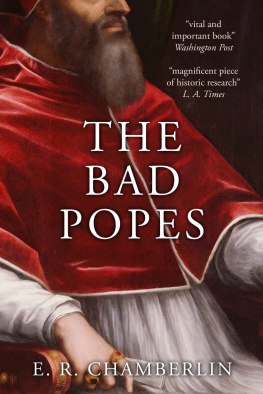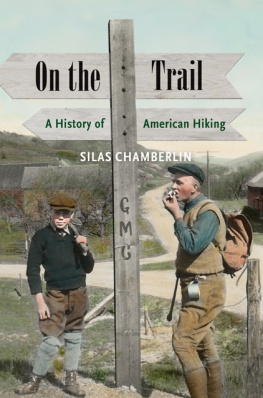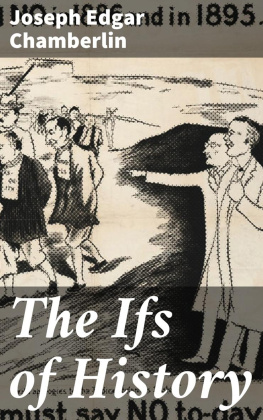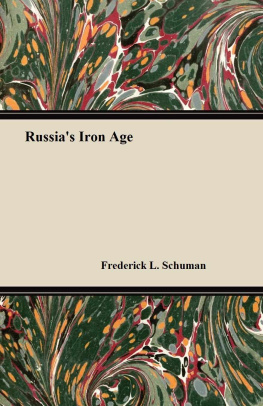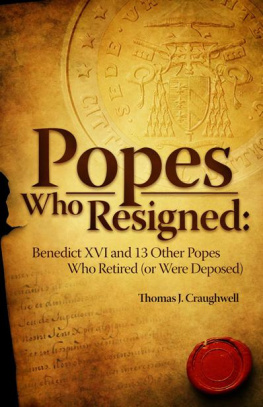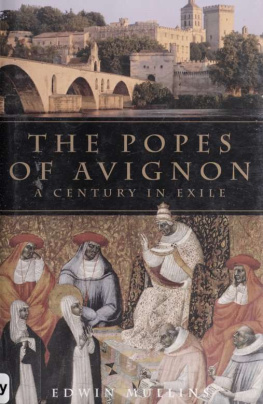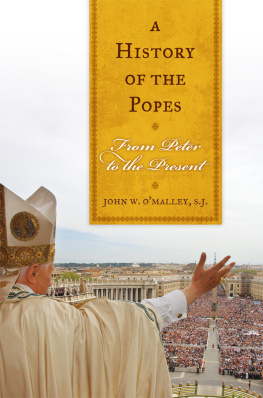Chamberlin - The Bad Popes
Here you can read online Chamberlin - The Bad Popes full text of the book (entire story) in english for free. Download pdf and epub, get meaning, cover and reviews about this ebook. year: 2020, publisher: Sapere Books, genre: Detective and thriller. Description of the work, (preface) as well as reviews are available. Best literature library LitArk.com created for fans of good reading and offers a wide selection of genres:
Romance novel
Science fiction
Adventure
Detective
Science
History
Home and family
Prose
Art
Politics
Computer
Non-fiction
Religion
Business
Children
Humor
Choose a favorite category and find really read worthwhile books. Enjoy immersion in the world of imagination, feel the emotions of the characters or learn something new for yourself, make an fascinating discovery.
- Book:The Bad Popes
- Author:Chamberlin / ER
- Publisher:Sapere Books
- Genre:
- Year:2020
- Rating:5 / 5
- Favourites:Add to favourites
- Your mark:
- 100
- 1
- 2
- 3
- 4
- 5
The Bad Popes: summary, description and annotation
We offer to read an annotation, description, summary or preface (depends on what the author of the book "The Bad Popes" wrote himself). If you haven't found the necessary information about the book — write in the comments, we will try to find it.
The Bad Popes — read online for free the complete book (whole text) full work
Below is the text of the book, divided by pages. System saving the place of the last page read, allows you to conveniently read the book "The Bad Popes" online for free, without having to search again every time where you left off. Put a bookmark, and you can go to the page where you finished reading at any time.
Font size:
Interval:
Bookmark:
THE BAD POPES
E. R. CHAMBERLIN

Table of Contents
It is now more than a thousand years since these territories and cities have been given to the priests and ever since then the most violent wars have been waged on their account, and yet the priests neither now possess them in peace, nor will ever be able to possess them. It were in truth better before the eyes of God and the world that these pastors should entirely renounce the dominium temporale : for since Sylvesters time the consequences of the temporal power have been innumerable wars and the overthrow of peoples and cities. How is it possible that there has never been any good pope to remedy such evils and that so many wars have been waged for these transient possessions. Truly we cannot serve God and Mammon at the same time, cannot stand with one foot in Heaven and the other on Earth.
Giovanni de Mussi , Chronicle of Piacenza, c . 1350
Part I: The Golden City
Rome, A.D. 900
Some time after the Flood, when men began again to move on the face of the earth and grew again in arrogance so that their impiety was confounded at Babel and they were again dispersed, Noah came to Italy and with his sons Jason, Japhet, and Camese built a series of cities upon the seven hills surrounding the Tiber. Jason lived upon the Palatine hill and, aided by Nimrod or Saturn, built the city of Saturnia upon the Capitoline hill. Other kings of glorious name, among them Italus and Aeneas, followed the lead of Noahs children and built other cities in the now sanctified area. Then, on April 17, in the four hundred and thirty-third year after the fall of Troy, Romulus came to surround all these cities with a single wall, making of them one and giving it his name. And all the nobles of the Earth, together with their wives and children, came to live in this new city of Rome.
Thus, in the tenth century, the Romans viewed the origins of their city, fusing into one picture the strands of Christian and pagan traditions. In it, Virgil and the author of Genesis are accepted as equal authorities, so that Aeneas rubs shoulders with Noah, Saturn with Nimrod, reflecting in literature the fusion of elements which were transforming Rome itself. It would retain its identity as the Eternal City but its ancient substances were taking on new shapes. The vast churches that now dominated it had been built from the materials of venerable temples, and the great monuments of the ancient city that survived were transformed either into fortresses for the ceaselessly warring nobles or into slum tenements for the proletariat.
The peoples of Europe, regarding in wonderment the ancient and imperishable city, wove legends for it that made it a mythological place. They might deplore its tragic fall from greatness, scorn its decadent and violent citizens; but they were touched still by the awe of its mighty past, transforming the reality of its political greatness into magical tales. The Englishman William of Malmesbury tells of how a certain Lucanius, citizen of this place youthful, rich and of senatorial rank, in a drunken frolic placed his wedding ring on the finger of a statue of Venus and found himself embraced that night by the goddess herself. Take me since you wedded me today. Lucanius is freed by a Christian priest but the priest himself employs pagan arts to do so. In a subterranean cavern, golden images of the dead sit motionless before an eternal banquet and then are stirred to terrible life when an intruder steals an ornament from the table. And even as reality is twisted into fable, so fable appears as reality, and Malmesbury soberly records the discovery of the body of the giant Pallas, of whom Virgil sang, still incorrupt so that there was visible the gash which Turnus made in the middle of his breast, measuring four and a half feet. But, lapped though it was by pagan legend, Rome was preeminently the Sacred City of Christendom; and though the thronging pilgrims might marvel at the body of Pallas, they would turn from it with a shudder and cross themselves the heroes of the old city being the demons of the new and seek more holy relics. The Romans made much profit by providing these gullible northerners with fragments of corpses of dubious origins, but sanctified by the fact that they were purchased in Rome. And when the relics had been purchased and the shrines visited and the offerings of copper or gold made at the tomb of Peter, the pilgrims turned to explore the wondrous city, as pilgrims always had and always would. For them there was a species of guidebook, the Description of the Golden City , a fantastic mishmash of legend and garbled history compiled by scribes from oral traditions over many generations. Beginning with the foundation of the city by Noah and his sons, it took the pilgrim down to the present, guiding him to the great monuments of the past, explaining in confused and inaccurate detail the complex, interlocking machinery of imperial, papal, and civic government that ruled Rome. It also provided posterity with one of the few descriptions of the city during the dark centuries.
Rome had changed little from the final form established by the emperor Aurelian when he built the great enclosing walls in the third century A.D. They were Romes final defense. Whatever else was suffered to fall into ruin, the walls were maintained, generation after generation and century after century, encompassing a city that would otherwise have become a shapeless sprawl. In the first decade of the Christian era, during the years of Augustan splendor, there had been a tremendous upsurge in building, culminating in the reign of Nero when vast, gleaming structures swallowed whole streets and areas. After the collapse of the empire the city suffered endless sacks, but it was the Romans themselves who dismantled the classical city and that for the most humdrum of reasons marble, when burned, yields lime which can be used for plaster.
The scores of limekilns in the city were each fed by irreplaceable fragments of past glory. The great blocks of travertine that formed the core of the walls were broken up to make byres and hovels: Those columns that escaped the limekilns, or were not incorporated into new churches, lay where they fell, protected at least by the accumulated rubbish. But Augustan Rome had been built upon such a colossal scale that, though it was plundered daily for centuries, the center of the city survived as an identifiable entity. A contemporary of Augustus or Nero could still have found his way easily enough around the tenth-century city, recognizing most of the monuments of his day, though he would have been appalled by the filthy condition of the streets themselves. Many were permanently blocked by collapsed buildings; all stank in high summer. The city that had known the splash and play of countless fountains now endured an endless drought, for the great aqueducts were ruined.
Nevertheless, within the circle of the Aurelian walls, the ground plan of the city remained largely unchanged. It was on the other side of the Tiber, on the slopes of the Vatican Hill, that the new age had made its most distinctive mark, creating a virtually separate city that was to control Rome over the coming centuries.
Until 850, the Vatican Hill was outside the walls of Rome. Even Aurelian had not thought it worthwhile to extend his protecting walls to this desolate area. Its plain was a fetid marsh, malarial in summer and in a land where men naturally gravitated to the summit of hills its inhospitable upper slopes remained sparsely populated for centuries. Nevertheless, the increasing population in the city made even this dreary region of potential value. Part of it became a cemetery and part of it Nero developed as a great pleasure garden where, in its famous Circus, according to Christian tradition, the apostle Peter was crucified during that night of insane cruelty in A.D. 64 when the living bodies of Christians were turned into torches, heralding the persecutions under Nero.
Next pageFont size:
Interval:
Bookmark:
Similar books «The Bad Popes»
Look at similar books to The Bad Popes. We have selected literature similar in name and meaning in the hope of providing readers with more options to find new, interesting, not yet read works.
Discussion, reviews of the book The Bad Popes and just readers' own opinions. Leave your comments, write what you think about the work, its meaning or the main characters. Specify what exactly you liked and what you didn't like, and why you think so.

